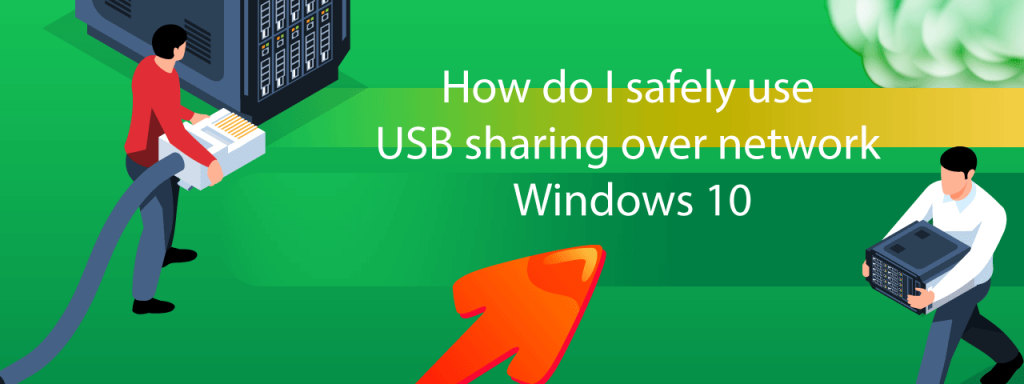How can I Share USB over the network Windows 10 for companies?
Today, computers are in every home and office. This is one of the devices that allows you to work and learn new materials without leaving home. But computers have not only helped to divide some tasks in work or learning. Technology does not stand still. Thanks to constant development, users can use a contactless connection to the computer. It can be a computer monitor, camera, keyboard, printer, etc. There are various software options that allow USB sharing over Windows 10. Our company offers to install software that will allow you to optimize your company workspace or use it for personal use.
What remote connectivity options are available?
Today, connecting devices remotely to your computer is easy with modern technology. Thanks to the ability to share USB devices over the Windows 10 network, you can optimize your computer’s work and use processes, such as centralized file storage. This is the remote ability to use virtual space to store important information. All repositories are securely protected. Therefore, companies use this method to encrypt and store important information. For example, you can set up access to specific files and forward them to one of the company’s employees. This allows you to optimize your computer’s performance. Connecting devices remotely keeps your computer running faster, prevents programs from freezing, and extends the life of your computer.
USB over Network technology allows USB peripherals to be redirected to any environment, including virtual machines and guest operating systems. Of course, there are USB-enabled virtualization applications, but in most cases, accessing devices connected to the host computer is a real challenge for many users. USB networking solutions come to the rescue with intuitive interfaces and powerful features.
You must share USB devices in an office, such as printers, scanners, laser plotters, webcams, external hard drives, etc., with other employees. Installing special USB software over a network is the easiest way to do this. This application allows you to access any remote USB device, no matter how far away.
USB over the network allows you to connect a USB device to one computer and then use it on another computer on the same network. This is especially useful when working with a USB device on a remote server or connecting a printer to another computer.
Using a wireless access point to share USB devices via Wi-Fi
Using wireless connection devices lets you optimize the company’s work, increasing productivity. With the USB wireless adapter, you can wirelessly connect your computer (or any other device) to your home network. You can also use it as an access point and set up an independent wireless network on its basis. In this case, buying a separate router is unnecessary – a computer with a WiFi USB adapter performs all its functions. This is one way to connect devices to your computer remotely. The absence of wires ensures mobility and quality of work.
Another way to connect your devices to your computer is Bluetooth. You can use it to connect a mouse or keyboard quickly. The Windows 10 operating system has an updated version of Bluetooth that allows you to connect paired devices rapidly.
Data protection when using the wireless USB port
You can optimize your security system by following simple rules. Since USB over network software, windows 10 is supposed to use the remote connection. This kind of connection to devices can be risky, as stealing data through the internet is very easy. However, quality software contains encryption that prevents the data from being transferred to third parties.
It would help if you also had wi-fi optimization for properly functioning device connections to your computer. Time on air is a valuable resource, and reducing unnecessary management and providing traffic control is necessary. One way is to decrease the number of SSIDs to 3-4 per access point. Each SSID means that a request is sent multiple times per second – there have been cases where empty networks are overloaded with requests alone. Changing the frequency of requests from the standard 100ms to 300 ms also makes sense. Although some older VoIP equipment still requires a 100ms request rate.
Tracking performance over time and seeing peaks and troughs in throughput, packet loss, latency, and signal jitter is essential. Improving these metrics with heavy network usage will ultimately result in the best wi-fi performance. Collecting data at night when the network is “empty” can also be extremely valuable – if a lightly loaded network can’t maintain good performance, high utilization is out of the question.
How to fix connection problems?
Connecting various devices to your computer’s USB port over a short period can affect the port’s operation and cause the apparatus to stop being recognized. The problem has several possible solutions, although some require administrator privileges.
First, look at the connected USB device and check if it is connected correctly or damaged. If outdated drivers are why the USB ports no longer work, an update may help.
Alternatively, select your computer in Device Manager, click “Action,” and click “Search for Changed Hardware.” Finally, check to see if the USB device is working again. If it doesn’t, you have the following options:
Using remote device connections allows you to optimize your computer’s performance. This makes the task much easier in both work and home environments. Users can connect the mouse, keyboard, printer, and other devices to the computer. At the same time, the security of information preservation remains high.
